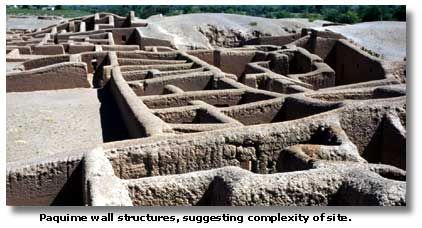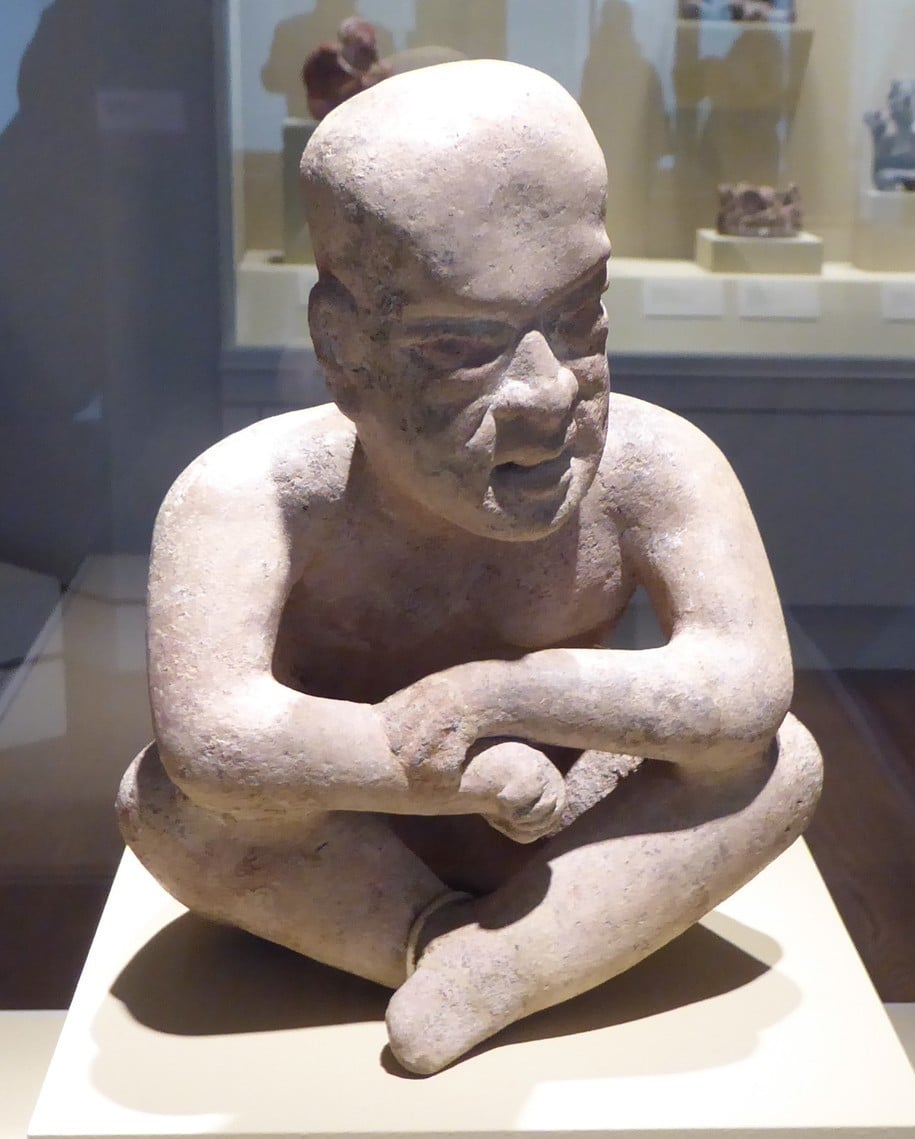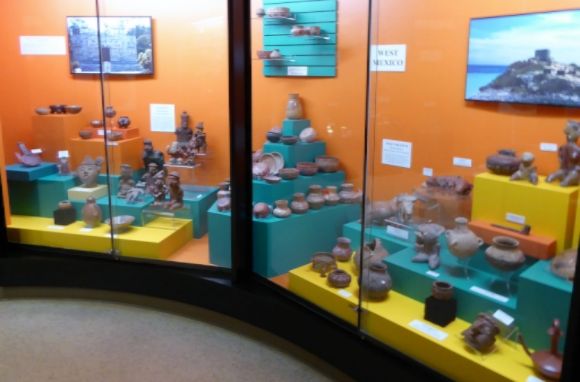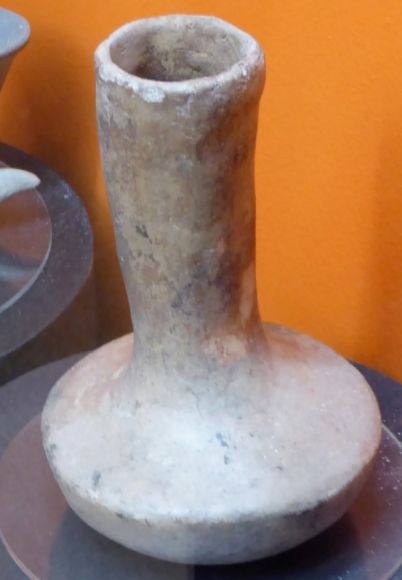Ancient America: The Aztec

( – promoted by navajo)
When the Spanish began their conquest of Mexico in 1519 they encountered a powerful nation known as the Aztec. The Aztec called themselves Mexica and from this the name Mexico is derived.
According to oral tradition, the Aztec originated in a land known as Aztlan. Some experts feel that Aztlan was actually in Arizona. The Hopi-an ancient Arizona people-are linguistically related to the Aztec. Furthermore, there are some similarities between some of the Hopi stories of origins and those of the Aztec. There are others, however, who feel that Aztlan was in Northern Mexico, perhaps in the present-day state of Sonora.
According to their oral traditions, the Mexica (Aztec) were to wander the earth looking for the promised land. The promised land would be in a broad valley. In the center of this valley there would be a lake. In the center of this lake there would be an island. In the center of this island they would find an eagle sitting upon a cactus with a snake in its claws. It was here that they were to build the great city which would be the capital of their empire.
The story describes the valley of Mexico and the location of the Aztec city of Tenochtitlan. Today, this story is symbolized on the Mexican flag which shows an eagle on a cactus with a snake in its claws.
When the Aztec arrived in the Valley of Mexico they found it to be densely populated. There were at this time a number of city-states in the valley. Initially, the Aztec did not begin construction of their city, but instead went to work for these city-states as mercenaries (military contractors in today’s terminology). The Aztec soon gained a reputation as fierce and skillful warriors.
The Aztec city of Tenochtitlan was founded in 1325, less than two centuries prior to the Spanish conquest. Tenochtitlan was a fully planned city. It was based on a symmetrical layout that was divided into four city sections called campan. Within each of these four sections were calpolli: groups of related families. Each of the calpolli had its own temple and gods. Leadership of the calpolli was provided by a principal chief who was elected for life.
Each calpolli was subdivided into a hierarchical class system. The elite-also called nobility-formed the top group, and most of the people were commoners. It was possible for commoners to advance to nobility through valor in battle. At the bottom of the class system were the serfs and the slaves. People became slaves because they were unable to pay their debts, which were usually due to gambling losses.
Tenochtitlan was on an island. The Aztec connected it to the mainland with three major causeways. The spiritual and political center of the city was the ritual precinct. Here the Aztec built a great pyramid that rose nearly 200 feet in height. The pyramid and the temples and palaces which surrounded it were built of stone.
The Aztec, like the other American Indian civilizations, did not have draft animals or wheeled vehicles. To facilitate traffic-the flow of people and goods-throughout the city they constructed a web of canals. Canoes provided quick and easy transportation.
To feed the city’s population, the Aztec surrounded their island city with chinampa beds. These floating gardens provided an extremely efficient agricultural system. With this system, the Aztec managed to obtain up to seven harvests each year. A single chinampa hectare would feed 20 individuals per year. It is estimated that the chinampas of Tenochtitlan could feed a population of about 180,000 people.
In the time just prior to the Spanish invasion, the population of Tenochtitlan was estimated at 200,000 and the total population of the area (what we would call the metropolitan area today) was estimated at about 700,000.
The Aztec emperor was selected by a council of nobles, chief priests, and top war officers. However, the emperor was selected from the royal lineage and was usually the brother or son of the previous emperor. This was not a democracy. Once in power, the emperor was an absolute ruler. He was supported in this role by a close link with the god Huitzilopochtli. As a rule he was a representative of this god.
When a new emperor was selected, he was first taken by the chief priests to the Great Temple. Here he meditated, fasted, and prayed. Then the priests would escort him to his palace for a coronation banquet attended by kings from other lands outside the Aztec domains. After his coronation, he was treated as a semi-divine being. When he traveled, a group of nobles would carry him on a litter of feathers. Cloths would be strewn on the ground as he walked so that his feet wouldn’t touch the earth.
Economically, the Aztec are considered to be a pre-capitalistic people. They had a market economy which included the use of several types of currency. For small purchases, cacao beans served as money. These were not native to the Aztec homeland and had to be imported from Mexico’s lowland areas. This increased their value. For larger purchases, the Aztec used standardized lengths of cotton cloth called quachtli. These two forms of money were used primarily when making purchases in the markets.
A typical Aztec town would have a weekly market, but the larger cities held markets every day. According to the Spanish, the central market of Tlatelolco, Tenochtitlan’s sister city, had about 60,000 shoppers per day.
Within a typical market there would usually be several different kinds of vendors. These would include farmers who would be selling some of their produce and potters who were selling their vessels. In addition, there were professional merchants. These merchants would travel from market to market buying and selling different products.
The professional merchants were organized into pochteca, a type of guild. There were 12 of these hereditary guilds, each with their own gods. The pochteca were wealthy and powerful. The pochteca would travel throughout Mesoamerica, seeking goods which they could sell in the various markets throughout the Aztec empire. This was dangerous work for it was not uncommon for them to be attacked and killed for their goods, or to become ill while traveling through unfamiliar country. The pochteca also served as the judges and supervisors of the larger markets.
While the Aztec certainly had a mercantile, commercial economy, it is not considered to be capitalistic. Two items which are important in a capitalistic economy were not for sale: land and labor.
While the Aztec had neither draft animals nor wheeled vehicles, they did interconnect the many cities and towns of the empire with roads. At regular intervals-roughly 10 to 15 kilometers-there were places for the travelers to rest and to eat. There were also latrines at these rest stops. The cost of maintaining these roads was collected through tribute from the communities.
The Aztecs grew to have great political and economic power in Mexico because they were able to conquer many of the other Indian nations in the area. They did not, however, govern these conquered nations directly. Instead, the Aztec political organization was set up to extract tribute from these conquered peoples and to gain wealth for the Aztec ruling class. Each of the conquered nations pledged obedience and tribute to the Aztec empire. The Aztec empire can best be described as a hegemony of city-states. It was a jumble of states under Aztec military control which was supported by Aztec religion.
There were about 38 states in the empire which paid tribute to the Aztec. This tribute included valuable goods (foodstuffs, exotic tropical feathers, gold, jade, turquoise, resin, incense, feathered warrior costumes) and captured warriors to be used in sacrificial rites.
As an example of tribute, the southern province of Techtepec was required to produce 16,000 rubber balls a year for the Aztec capital of Tenochtitlan. In order to make these balls, the Techtepec would have needed to collect sap from about 50,000 trees. Each ball took about 15 hours to make. Thus 16,000 work days would have been needed to produce the balls required for tribute. Once produced, the 16,000 balls, which would have weighed more than 100,000 pounds, had to be carried by human porters to Tenochtitlan which was some 200 miles away.
The Aztec maintained their empire through hard power: through an efficient and well-led army which was constantly waging war. Aztec culture gloried warfare and warriors. All Aztec men participated in war: even the nobility, the priests, and the merchants fought in the battles. Through valor on the battlefield, commoners could raise their social status and obtain great wealth. Death in battle was regarded as a glorious sacrifice to the war god Huitzilopochtli. Aztec warriors were dedicated to die in battle.
The Aztec wars are commonly known as the Flowery Wars. The purpose of the Flowery Wars was to obtain captives who could then be sacrificed to the Aztec gods, primarily Huitzilopochtli and Tezcatlipoca.
Aztec religion was centered around a founding warrior hummingbird deity, Huitzilopochtli, and other gods devoted to war. Huitzilopochtli was the most important of the Aztec gods and the largest temple (pyramid) in the Aztec cities was dedicated to him.
After Huitzilopochtli, the next most important war god was Tezcatlipoca (also called Black Tezcatlipoca). He was called the “smoking mirror” god because he carried with him an obsidian mirror. With this mirror he could see everything that took place in the world. He also carried arrows with him so that he could punish wrongdoers. Tezcatlipoca was able to take on many different guises and to transform himself into other gods.
The Aztec had a god of vegetation and fertility whom they called the Xipe Totec (“Our Lord the Flayed One”). He was worshipped as a god of renewal and thus provided the people with plentiful crops. Priests and warriors honored Xipe Totec by wearing the skin of flayed captives of war.
Some of the other Aztec gods included Tlaloc, the god of the storms (and thus the bringer of rain), and Quetzalcoatl, the feathered serpent god who was the lord of life. Quetzalcoatl was a lesser deity who was associated with healing, love, and light. Quetzalcoatl’s association with peacefulness and harmony was in stark contrast with the rest of the Aztec pantheon which focuses on war. Thus, Quetzalcoatl had reduced stature in Aztec culture and was even banished to return at some time in the future.
The Aztec also had numerous other gods of the earth, the heavens, and the underworld.
According to Aztec religion and world view, the sacred and special role of the Aztec was to keep the sun in the heavens and thus prevent the final destruction of the world. Every day, the sun would fight off the evils of the night and arise weak in the morning. In order to provide the gods with the sustenance to prevent the total destruction of the world, the Aztec had to “feed” the gods the essence of human life each morning. With the blood and the energy from these sacrificed humans, the gods could continue to maintain the world. Rather than sacrifice their own people, the Aztec preferred to sacrifice war captives.
Huitzilopochtli in particular required the hearts of enemy warriors to keep going and to keep the sun in the sky. Thus, the priests would perform ceremonies each morning on the tops of the pyramids in which they would rip out the hearts from war captives and offer them to Huitzilopochtli.
It should be pointed out that human sacrifice was found throughout Mesoamerica and that the practice pre-dates the Aztec arrival in the Valley of Mexico. The Aztec, however, carried out human sacrifice at an unprecedented level. For example, in 1487 the Aztecs reported that they sacrificed 84,400 prisoners over the course of four days. There are some who feel that this is an exaggerated figure, but it is evident that the Aztec sacrificed lots of people and that the world did not end during their reign.
The weakness of the Aztec empire lay in the fact that it was forged by conquest and held together by tribute. The Aztec were constantly having to put down rebellions within the empire and there were a number of states that remained independent. If the Spanish had not arrived to conquer them, it is quite possible that the Aztec empire would have collapsed anyway.



